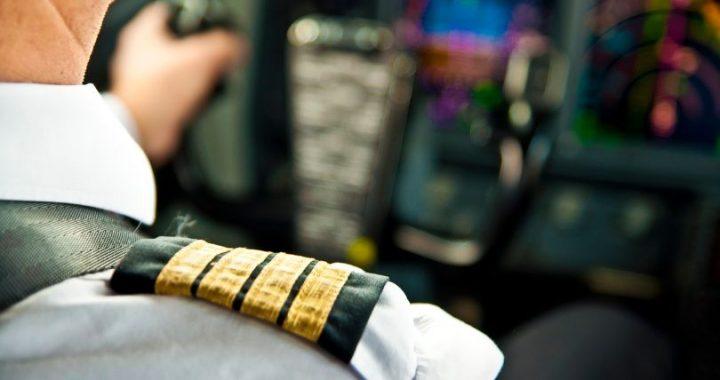For a flight to go seamlessly without hiccups, there are a number of things that must go according to plan. The pilots in the aircraft and the rest of the flight crew will need to perform a series of tasks during the flight that are interconnected to ensure a safe flight. Different types of devices and apps are always being employed to perform these tasks, with some being more complex than others. Gone are the analog days when every flight documentation was done and recorded solely using paper references.
The beauty of these devices and apps for the flight crew is amplified when they are all embedded in a single device. An Electronic Flight Bag (EFB) is such a device and its importance to the success of a flight cannot be overemphasized. It helps to make it easier for flight crews to do their job effectively and prevent any unwanted issues and setbacks. It also helps to save time and space in the aircraft.
With so much out there to know and understand about an electronic flight bag, its working, its benefits, and so on, we’re dedicating this post to explaining all things electronic flight bags.

What Is An Electronic Flight Bag?
The “Electronic Flight Bag” or EFB as it is more often called covers a wide range of portable electronic display hardware used in the flight cabin. The devices of an EFB help in the storage and display of different aviation data and also perform some basic calculations. Examples of some of the aviation data on display on an EFB include operation manuals, navigational charts, aircraft checklists, crew rosters, and document libraries. This makes the EFB an electronic management device comprising many other subdevices.
With different devices and apps performing these functions simultaneously, an EFB can be seen as a combination of devices displaying EFB applications. However, the EFB is not only limited in scope to just displaying aviation data. It can also function as part of the avionics system of the aircraft to perform some functions. Some of these aircraft performance functions include depicting real-time weather and displaying the aircraft’s position on navigational charts. As well as calculating fuel usage, and performing other complex flight planning tasks.
The beauty of the EFB and its usefulness has seen it being actively incorporated by different flight operators and crews in recent times. More aviation-specific applications are hitting the market daily to further improve and better the entire flight experience.

Electronic Flight Bag Benefits
The emergence of electronic flight bags has brought numerous benefits to airlines. Some of these benefits include;
- Improvement in access to information
- Improved compliance
- Saves cost
- Improved safety
- Better efficiency
- Reduction in weight of the aircraft
- Better communication
- Automation and streamlining of processes

Electronic Flight Bag Classes
Classification of EFB hardware began with three levels of classes based on their functionality – Class 1, Class 2, and Class 3.
Class 1
This class of EFBs is regarded as Portable Electronic Devices and stowed below 10,000ft. They consist of devices that are not required for take-off and landing. These devices need no administrative processes if they are to be removed from the aircraft. The connectivity of class 1 EFBs to other aircraft systems is read-only and it possesses limited read-only interconnect and quick disconnect aircraft power when removed from the aircraft. They are always stowed for take-off and landing operations which limits when they can be used.
Class 2
These are Portable Electronic Devices used during all phases of the flight. They are mounted during the flight and require an administrative process for replacement or removal. Design approval is required compared to class 1 which is not mounted. Class 2 EFBs can have limited connectivity to other aircraft systems and data like weather information. They also have access to power and interconnect because they are mounted. Despite being mounted, they still possess quick disconnect capability for egress.
Uses of class EFBs include computing weight and balance info, displaying pre-composed data like navigational charts, and take-off and landing speeds. A separate aircraft interface module is needed with class 2 EFBs and they can be used for displaying departure, arrival and approach charts for pilots since they are not stowed away for take-off and landing.
Class 3
Much like Class 2 EFBs, Class 3 EFBs are fixed on the aircraft. By this, they require design approval, a Supplemental Type Certificate, and Airworthiness Approval. The latest models of Class 3 EFBs can be connected to GPS or Flight Management System (FMS) which helps it combine GPS position with the location with speed vectors of other aircraft. With this, a detailed moving map display containing real-time graphic weather information and terrain warnings.
EFB applications are also classified into Type A, Type B, and Type C classes based on increasing sophistication.
Type A Applications
These are the least complex EFB applications as they are used for the storage and retrieval of documents. Such documents include operations manuals, logs, records, data sheets, and guidance materials.
Type B Applications
These are used to display weather information and charts and maps with no GPS location, checklists, and also for independent performance calculations.
Type C Applications
These have automatic interactions with other aircraft systems and so are used for display and performance functions. As well as active control of the aircraft in flight.
Electronic Flight Bag Regulations
EFB use for aircraft operation requires approval from appropriate regulatory authorities. More scrutiny is to be expected for approval of EFB use with commercial, fractional, and charter operators. These regulations are instituted to ensure that safety assessments are properly done and risks are mitigated. There are different regulations for certifications across the three classes of EFBs.
Class 1
For certification of Class 1 EFBs, an assessment will be required on the physical use of the device in the flight deck. Risks from electromagnetic interference, the deactivation capability of the power source, and the use of lithium batteries are also to be assessed.
Class 2
For certification of Class 2 EFBs, regulatory approval is required for mounting the device. Assessment is done on its integrity, power connection, and data connectivity. Isolation of the device from other aircraft systems must also be validated. Other assessments carried out on Class 1 EFBs are also carried out alongside.
Class 3
For certification of Class 3 EFBs, full airworthiness approval will be required. This is the same approval given to other onboard avionics systems. Certification will also require proper evaluation of human factors and safety requirements.
Some other regulations for specific aircraft type design that break out of the primary guidance material as provided by the advisory circular of the Federal Aviation Administration (FAA) include;
- AC 91-78 – use of Class 1 or Class 2 EFBs
- AC20-159 – Class 1 and 2 EFBs for use on the ground only
- AC20-173 – installation of EFBs
- AC 120-76d – authorized for use of EFBs
- AC 91-21-1 – use of portable electronic devices (PEDs)
- AC 20-64 – electronic checklists
In the US, Part 91 operators as pilot-in-command are able to approve the operation of their own Class 1 and 2 EFBs. However, operational approval through OpSec must be obtained by Part 91K, 135 and 121 operators.
Electronic Flight Bag Comparison
Electronic flight bag; a real game-changer in the aviation industry.
The aviation world will always be thankful for the game-changer that is an electronic flight bag. With new beneficial aviation applications arriving day-to-day, the devices in the electronic flight bag are bound to be more sophisticated with time. This is sure to improve the efficiency of the entire flight operations so as to assure your flight is safe, secure, and stress-free.
So, when next you’re in an aircraft, do well to remember that a small device like the electronic flight bag can determine how effective your flight operation is.
Looking for other advancements in the aviation industry to make your flight more comfortable? Look no further than the Jetbed. Custom designed for each aircraft, light-weight, and made right here in California – Jetbed is the comfortable way to fly. With Jetbed, frequent flyers like you can leave jetlag in the past and instead, say hello best sleep on a flight you’ve ever had. Information on how to order your custom Jetbed, HERE.

